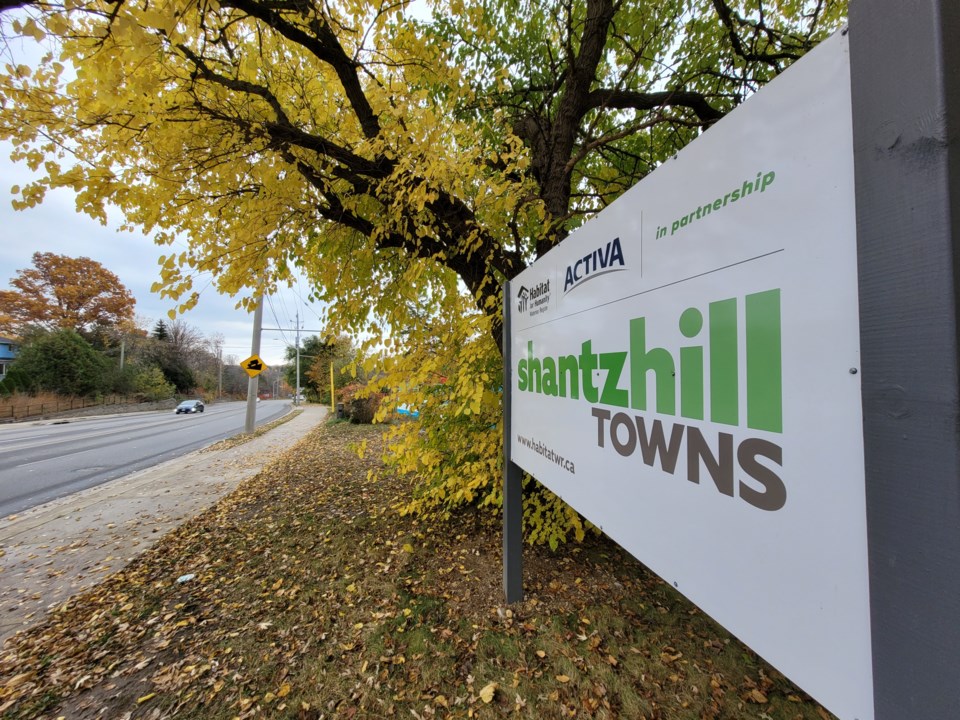The Ontario Land Tribunal is processing an appeal of the 24-unit Habitat for Humanity affordable housing development slated for 325 Shantz Hill Rd.
The appeal from neighbours Martin and Gerda Wiens concerns the bylaw amendment passed by city council on Aug. 15 that allowed the development to move forward.
It claims written submissions with “weighty objections” were not read or were ignored and that they weren't properly informed of the recommendation headed to council that evening.
In the Cambridge official plan, the property was initially designated low-medium density residential. Habitat for Humanity was not requesting a change to the official plan designation but did propose a zoning change to make the single detached residential to a multiple residential zone.
Councillor Corey Kimpson moved the motion to amend the zoning bylaw, which was carried unanimously.
Scott Hamilton also voiced his support of the development.
“I’m really excited for this proposal,” Hamilton said at the August meeting.
“To have affordable housing that's family oriented and to have a variety of units, we need more affordable housing units like this, not less.”
But not everyone is happy about the use of the property. Many of the concerns in the appeal have to do with traffic, noise, the amenity area and the reduction of the side yard setback to 2.2 metres.
During a public meeting on the proposal last December, Martin Wiens told council he doubts anyone will be as affected by the new development as his family and his neighbours’ family. But he predicts everyone in Cambridge could be impacted by regular shut downs of Shantz Hill Road due to serious crashes, “because it is a terrible place to try and get in and out.”
Wiens said he warned the city planner about his prediction but instead of urging Habitat for Humanity be asked to hire a consultant to undertake a traffic study, he recommended councillors to come out and see for themselves.
“Stand there for five minutes at a busy time…and I think you’ll get a better sense of where the concern is there,” he said.
The development would be made up of two 12-unit blocks of 3.5 storey stacked townhouses on a site that once held a single dwelling and sits close to the crest of the hill, the appeal reads. Many of the houses in the area are one to 1.5 stories.
The site also contains sensitive environmental features such as mature trees and associated wildlife.
The appeal refers to entering and exiting the property as “one of the most dangerous legal traffic manoeuvres in all of Waterloo region,” given the split of the road at the bottom of the hill with only the right lane at the left juncture of the split being able to access downtown Preston.
As for the noise, it argues that the levels are projected to exceed the allowable threshold.
“What is not obvious from the modelled side is how many times every night the noise level will instantaneously peak at levels much higher than the allowable thresholds,” the appeal says.
“Sudden bursts of noise disrupt people's sleep. The long term negative effects of this will have financial consequences for those who experience them.”
The appeal states it’s misleading to refer to the portion of Shantz Hill as being “part of the Built-Area” of the Official Plan but is rather a largely naturalized area within the city boundary and serves as a gateway to Cambridge through Preston.
At the public meeting on Dec. 13, 2022, when issues about traffic safety, noise, density and the size of the amenity area were brought forward by Wiens and others, it was determined a transportation impact study wasn't required by the city, region or Ministry of Transportation as part of the application for the amendment
A detailed environmental noise study was submitted and reviewed by the region. The region accepted the conclusions, recommendations and implementation measures which included the requirement for a noise wall along the north property line and noise warning clauses in the purchase and sale of each of the units.
As for overall density, it's under what's permitted on the site, which is 40 units per hectare. The proposed density is 32 units per hectare.



